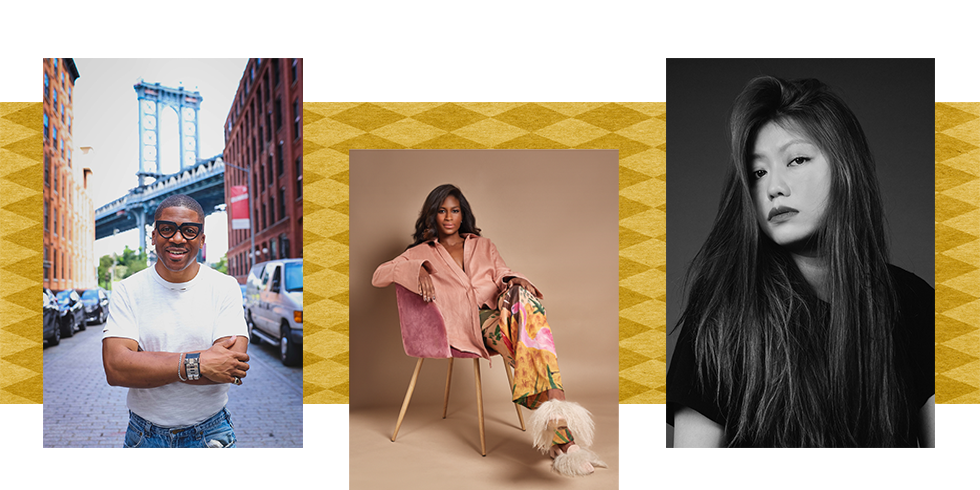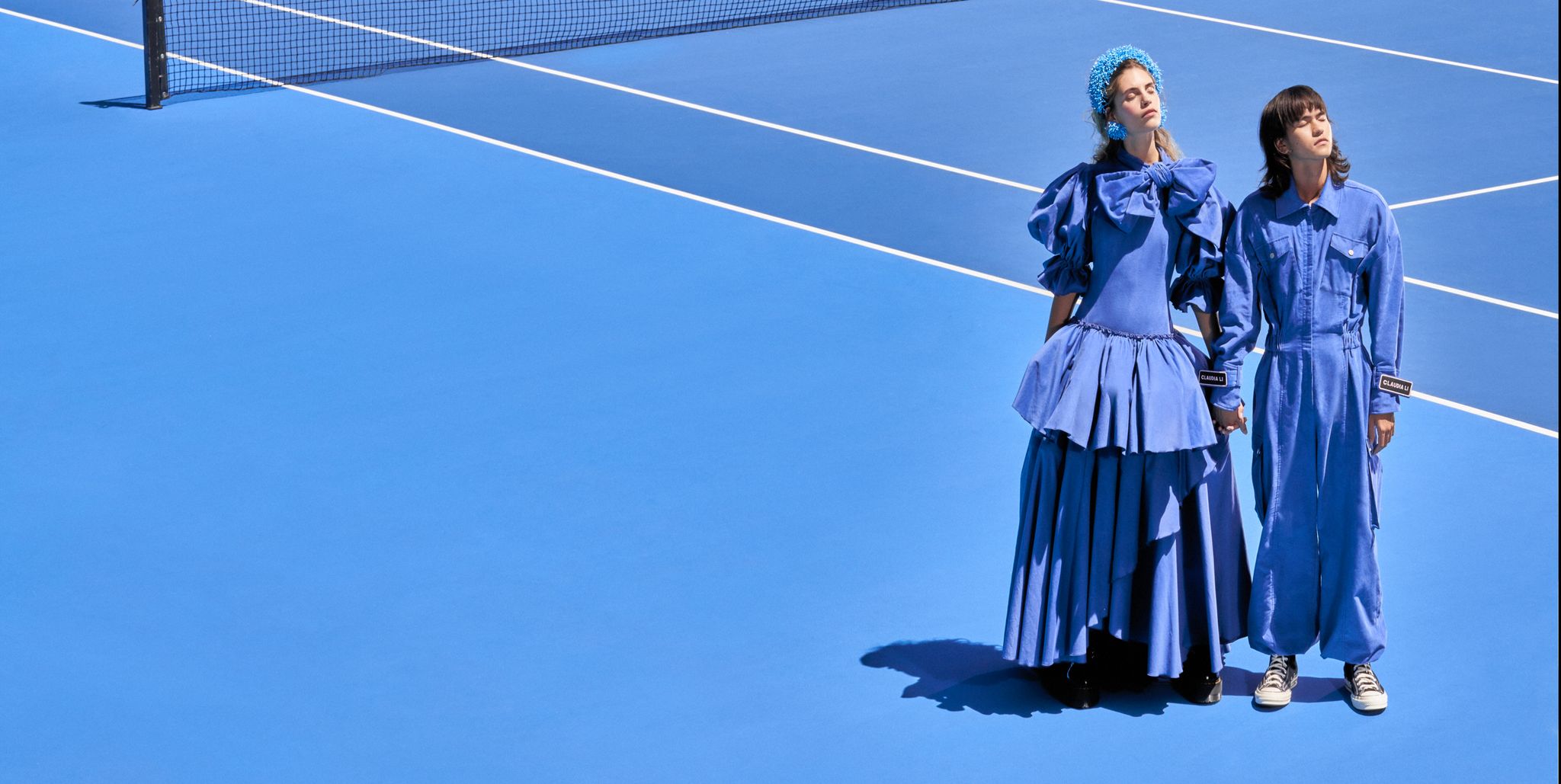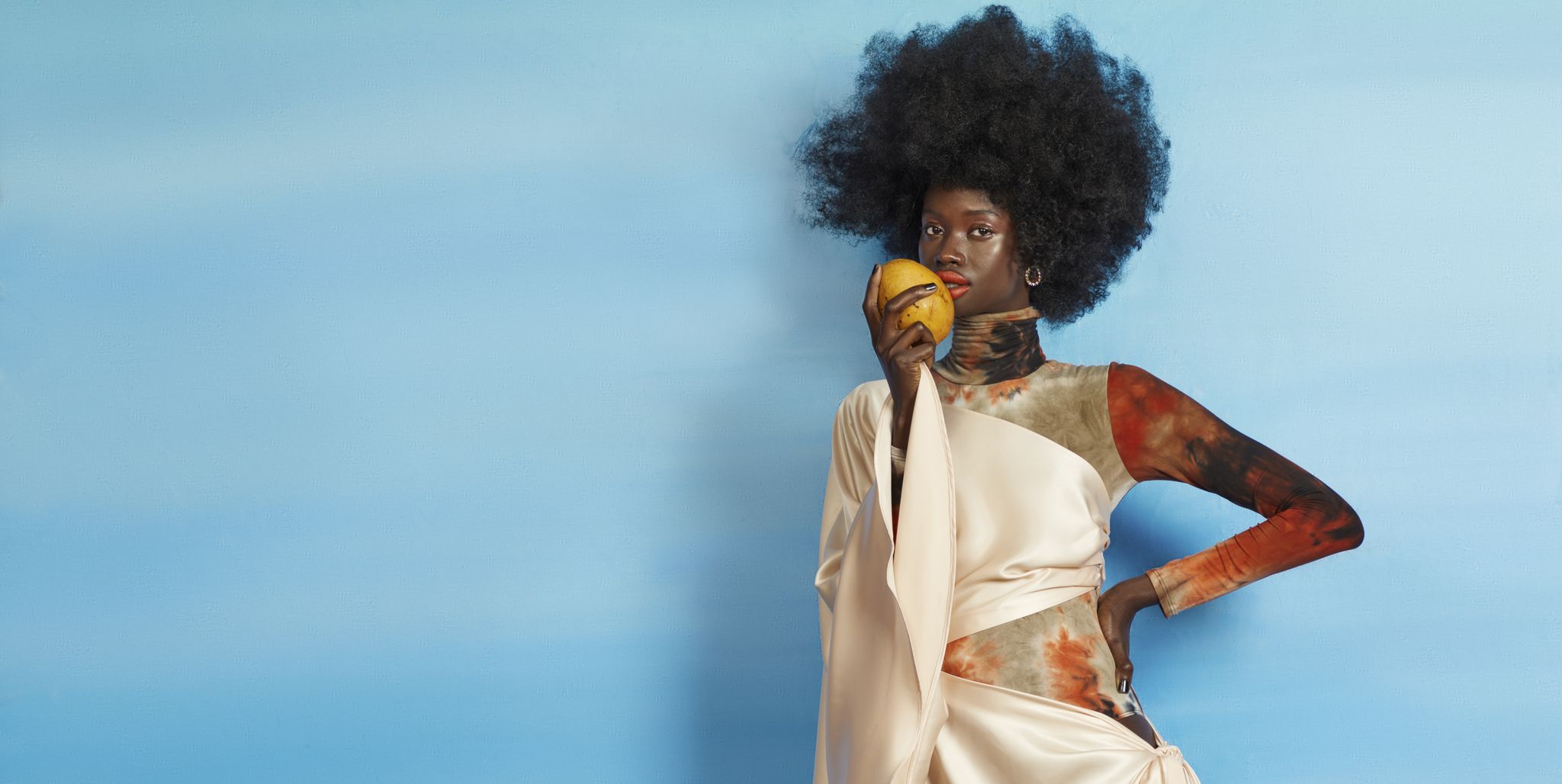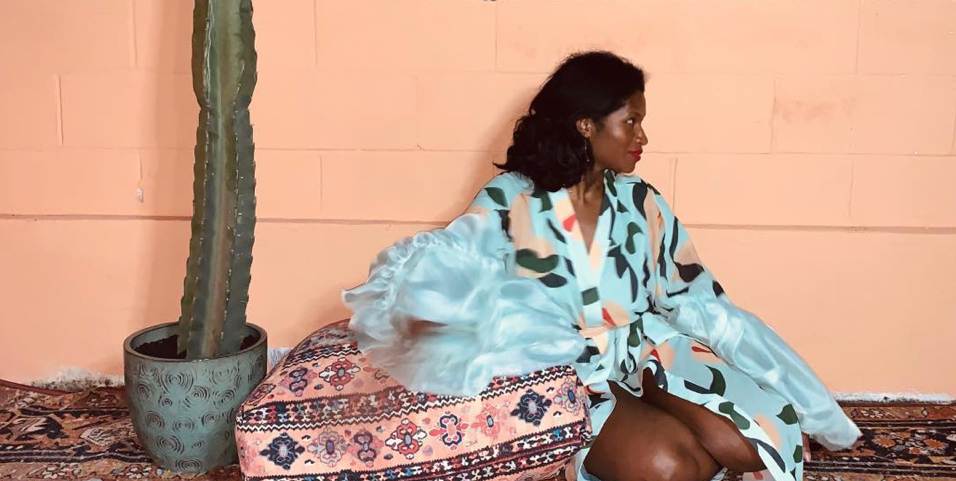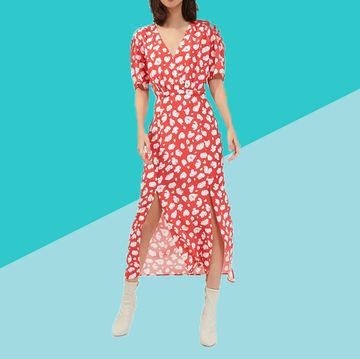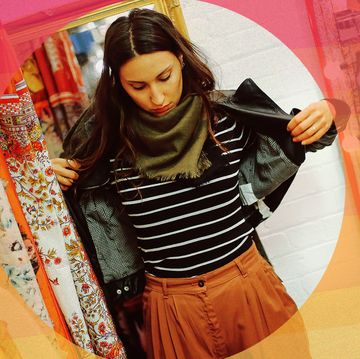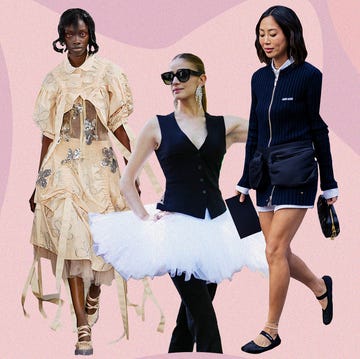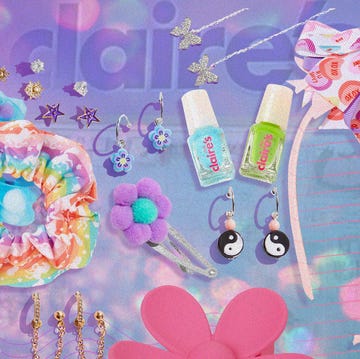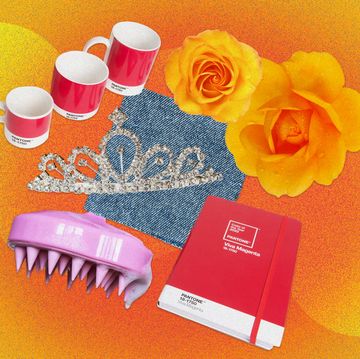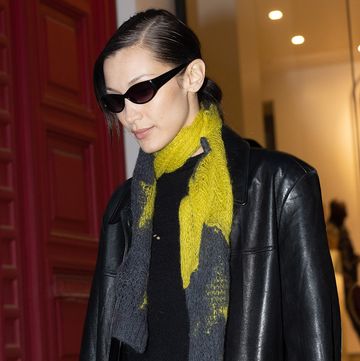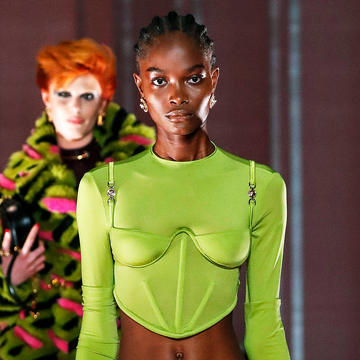At her lowest point in the pandemic, Claudia Li confronted one of the worst scenarios any young designer can face: the possibility of closing up shop.
“We’ve been through a lot the past two years,” Li tells Shondaland. “Not just with the pandemic, but everything. There was a point where I almost was like, ‘I can’t anymore.’”
The 32-year-old designer has been a rising star in the fashion world ever since she launched her eponymous label in 2015. She has consistently presented standout collections season after season at New York Fashion Week. Vogue called her spring 2021 ready-to-wear collection “an invitation to dance, to party, and to fall in love.”
With its playful 1980s-inspired elements — think a dizzying use of sequins and neon — the collection may as well be an act of resistance. Even when the thought of walking away from it all was on the table, Li summoned the strength to continue creating.
“I kept on going,” she says. “We need to fight. If we give up and discontinue what we’ve been doing, it’s raising a white flag and saying, ‘Well, I give up.’ And I’m not doing that. I’m a fighter.”
That spirit of resistance is evident in the two collections she’s designed since the pandemic began. Her fall/winter 2021 collection is filled with unexpected patterns, exaggerated silhouettes, and vibrant hues.
“Fashion needs to be fun and dreamy again,” Li says. “It’s what we need right now. I want to bring back the giant, puffy skirts — it’s something you probably will only wear to a ball or gala. But, you know, why not? Just wear it to a dinner or cocktail party or something.”
Fe Noel also predicts that a “why not” attitude will be a mainstay in fashion in the post-Covid years. The Grenadian designer has already made tropical prints and voluminous shapes a core part of her namesake brand’s ethos. Looking to the future, she envisions even more exuberance.
“We’re going to have a Roaring Twenties,” Noel says. “It’s going to be insane. People are going to celebrate like no other — people are probably going to wear ball gowns at weddings.”
Whether the ball-gown trend catches on or not, the reign of athleisure and loungewear won’t be ending anytime soon. After all, those segments have grown exponentially throughout the course of the pandemic. According to an analysis by Euromonitor International and Coresight published on CNBC, the U.S. athleisure market was expected to see sales total $105.1 billion in 2020 alone.
That’s a lot of sweatpants.
“That’s here to stay,” Noel says. “There’s going to be this juxtaposition of style, mixing loungewear with statement pieces. They’re going to create a new look, and I don’t know what it’s going to be called yet.”
Whatever the term may end up being, Noel describes it as the marriage between not letting go of comfort and making a statement with your personal style.
“Maybe people are not gonna leave the joggers at home,” Noel says. “Maybe it will be silk joggers with heels. People are going to be creative in the way they mix the two together. That’s the time we’re in — there’s space for newness.”
And we won’t know for quite some time how the newness created in this current era will influence future generations, says designer Romeo Hunte.
“Right now, there are no rules or dress codes,” Hunte explains. “Everyone is very open. This time and era will be inspiring in 10 years.”
Hunte — who’s dressed everyone from Selena Gomez in a blinged-out blazer to Zendaya in a multicolored boxy suit — argues that outerwear will play an even bigger role in piecing together your #OOTD (outfit of the day).
“Outerwear is a huge deal right now, especially with outdoor dining,” he says. “It’s all about a strong outerwear piece with a comfortable luxe piece underneath. It all goes back to the era of bohemian chic.”
For his fall/winter 2021 men’s and women’s ready-to-wear collections, going bold with outerwear clearly inspired Hunte. There are sweats-meets-leather creations and hybrid bomber jacket/trench coats that are probably unlike anything currently hanging in your closet.
Like Noel, Hunte believes the future of fashion will involve a plethora of unexpected combinations. Gone are the days of grabbing two items, staring in the mirror, and wondering, “Does this match?”
“The direction of fashion is mixing pieces in your closet,” Hunte says. “Whatever makes you feel good, wear it and make it your own. So many people have now been overdressing — even just to do normal activities like going to the grocery store or walking your dog. If you want to dress up, then why not?”
Working through a pandemic taught Hunte a lot about the moving parts that come with launching a collection. The entirety of his FW21 collection was brought to life virtually. “We have really had to pivot with all the Covid regulations,” he says.
While that initially caused stress, Hunte ultimately welcomed the challenge of producing something under different parameters.
“It’s been a great experience, especially working through a pandemic and coming up with the entire collection on Zoom,” he says. “Overall, the lockdown has also given me time to see what strategies for the brand are working and what needs to be changed.”
Before the pandemic, Hunte shares, it was all “just about work rather than fashion.” For the longest time, the status quo for designers was thinking about only one or two customers.
“There’s not just one customer now,” he says. “It’s the whole world. It has been put in fashion’s face. Designers have to be inclusive and diverse. The direction of where the world is going — you can’t just focus on one or two customers; you have to think of everyone.”
Noel agrees that fashion will finally begin to reflect “the melting pot of our world.”
“Which it should have, and it didn’t, and that’s no longer acceptable,” she says. “We all have different stories. We all come from different cultures. The world doesn’t look one way, and it never did. We’re not going to accept it being pushed to us as if it did.”
When Noel further considers the future of fashion, she sees “endless possibilities.” She also sees two distinct tastemaker categories: the old guard and the new guard. And the latter is far less likely to follow any of the former’s rules.
“The old guard, they’re nervous because they don’t know anymore,” Noel says. “The new guard, they don’t give a shit. Really the mind frame right now is kick in the door, do what you have to do to make your mark.”
As the industry navigates this new wave of talent, Noel is calling on decision makers and executives at big brands and major corporations to be intentional about their choices. Efforts like the 15 Percent Pledge, which asks retailers to allocate a minimum of 15 percent of their shelf space to Black-owned businesses (the number is roughly equivalent to the percentage of Black people in the U.S.), and the CFDA’s Changemakers scholarship program in partnership with Gucci, are a starting point for leveling the playing field.
But that’s precisely what they are: a starting point. Gucci, for instance, has long struggled with diversity, as evidenced by the blackface-sweater scandal it ignited during Black History Month in 2019. Its scholarship may be viewed as more corrective than progressive.
“I want to see the door swing wide open and not swing wide open out of pity,” Noel says. “Give people a chance to have access to resources we didn’t have access to. We are shifting in that direction, but we’re already behind. We’re already late.”
This shift has to happen now, she continues, and it can’t be a one-time initiative or campaign. “Make a real investment,” she says. “Don’t just show a Black performance at the Super Bowl, and that’s it. It has to go beyond that in every industry on every level.”
Having diverse perspectives in leadership positions is also a dream of Li, who believes underrepresented individuals keep getting overlooked because the department heads and C-suites remain relatively unchanged.
“There’s just so much talent, and I feel like it’s putting a résumé in at a huge company, and we’re at the bottom of the pile,” Li says. “It always feels like that. I speak for a lot of emerging designers who are minorities. We’re just not that important, to be honest.”
But much like her experience of persevering through the pandemic and keeping her business afloat even amid so much uncertainty, Li’s not backing down without a fight. And it’s one she’s willing to take on if that means shaking up a stale industry and opening pathways for those waiting in the wings.
“It’s for our future role models,” Li says. “If we don’t have them, who do you look up to? For some of us, there’s no role model that’s in a position you want, or that you one day wish you could be in. If you just don’t see it, you might think, is it impossible for us to do that? It’s very important to push this, especially for the next generation of designers.”
Mekita Rivas is a Washington, D.C. based writer and editor. She primarily covers style, culture, and politics. In addition to Shondaland, her writing has been published in The New York Times, The Washington Post, Vogue, Glamour, Cosmopolitan, InStyle, and others. Follow her on Twitter @MekitaRivas.
Get Shondaland directly in your inbox: SUBSCRIBE TODAY
